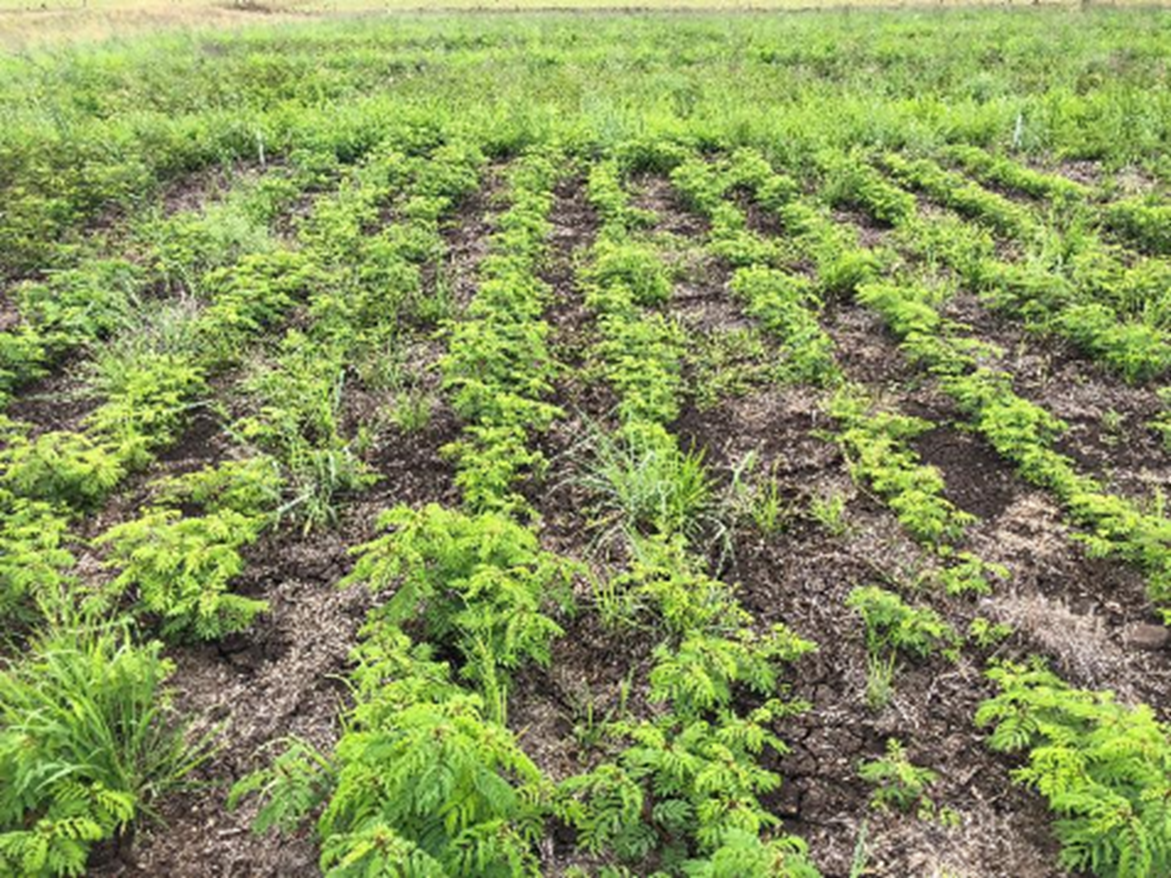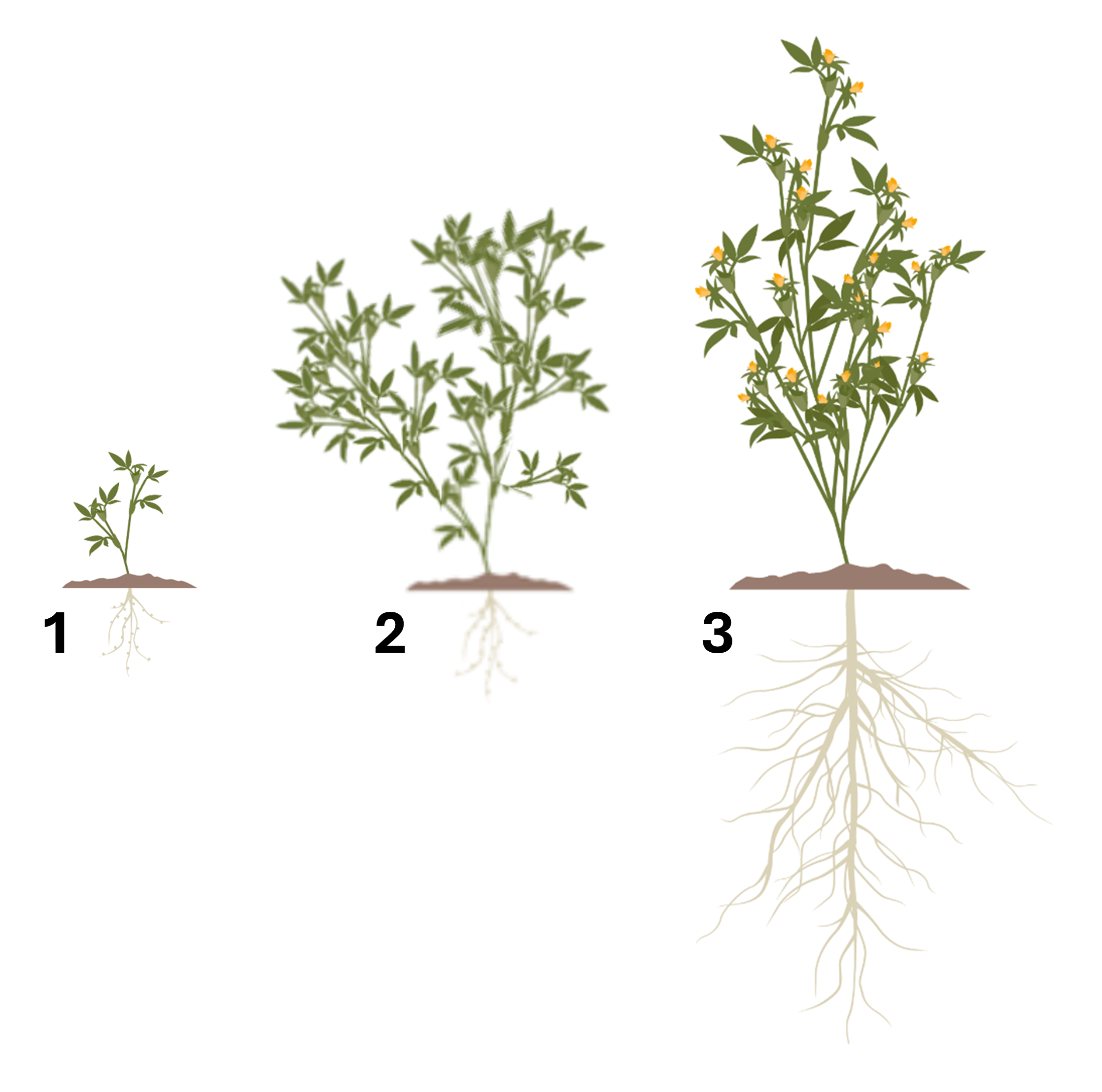Early grazing management of new legume pastures in the Brigalow Belt
Last year, we explored the importance of planning and sowing for successful legume establishment. We emphasised that success depends on reducing competition, storing moisture, and using the right planting methods for your soil and climate. Now, we turn our focus to managing established legume pastures to ensure their long-term productivity.
Grazing management plays a crucial role in this process, with two key steps:
- cautious early grazing during the first growing season (from emergence to the first winter)
- long-term grazing strategies to increase plant population and sustain productivity.
In this article, we are focusing on early grazing and in June we will dive into long-term management strategies.
What to expect from your legume plants
By following best management practices for establishing legumes (refer to our December and September articles), you can encourage seedlings to grow vigorously and establish quickly. From emergence to the first winter, you should expect:
- High plant density (around 4 plants per square metre).
- Large, well-developed plants capable of surviving their first winter and dry conditions.
- High seed production (dozens to hundreds of kilograms of seeds on the ground before first frost or the dry season).

Be mindful of overgrazing
In the early stages of legume establishment, it’s important to be mindful of your livestock’s grazing patterns if you want long-term success. Livestock naturally prefer young, green grass, but as grass quality declines, they increasingly seek out legumes. This can lead to uneven grazing pressure, particularly in pastures where legumes are established in strips or in paddocks with low legume density (i.e. plants per square metre).
In legume strips, grazing impacts may be more severe, requiring careful management. This is especially important when legumes are sown late in the season or when the remaining grass in the strips is of low quality and less palatable.
Cattle may selectively graze the high-quality legume and avoid the surrounding grass, potentially reducing the legume’s long-term persistence. To prevent overgrazing, it is essential to monitor livestock grazing patterns closely and adjust stocking rates or grazing rotations as needed.
Early grazing strategies
Properly timed grazing can benefit both legumes and associated grasses. Key considerations include:
Timing:
- The main aim is to maximise seed set. Therefore in most years, the first grazing is best timed after the plants have reached maturity, set seed, and either run out of moisture or been frosted.
- If legumes are growing well, light early grazing can stimulate flowering and seed production. For summer legumes, the first grazing is often in autumn if growing well.
- If growth is slow, delay grazing to allow seed set before introducing stock.
- Exclude any grazing once flowering has started until seed has set and matured.

1. Too early to graze – young plants may be damaged or pulled out of the ground.
2. A good time to lightly graze if there is moisture in the ground and enough time until frost is expected.
3. Not a good time for first graze as seed set will be disrupted.

Legume palatability and tolerance to grazing
Legumes vary in their palatability and tolerance to grazing, so understanding these differences is crucial for managing grazing pressure. Identifying the legume species in your pastures and evaluating their characteristics will help you make informed grazing decisions.
Some legumes are more palatable at certain times of the year, particularly when they are flowering or during early growth stages. By understanding your legumes’ growth cycle and palatability patterns, you can better manage grazing to optimise pasture health.
While some legumes recover well and adapt to grazing pressure, others may struggle, particularly during critical growth stages. Overgrazing large, previously ungrazed plants can weaken plants and reduce pasture productivity.
Recovery considerations
Before implementing grazing, consider factors that will impact legume recovery:
- Soil moisture: Adequate moisture is essential for recovery. Without sufficient soil moisture, legumes may struggle to regenerate after grazing, especially if grazing occurs late in the season.
- Days to frost: As the likelihood of frost becomes higher, heavily grazed legumes with little foliage and root mass will struggle to make it through winter and recover quickly in spring. The combination of reduced daylight and cooling temperatures makes recovery more challenging, and plants may not regenerate before frost sets in.
- Daylight length: Shorter days limit photosynthesis and prompts tropical plants to enter winter dormancy. If legumes are grazed too heavily in autumn and enter dormancy depleted, they may lack the energy needed for recovery in spring.
Overgrazing, especially when plants are stripped of leaves, severely affects recovery. The combination of low soil moisture, limited daylight, and frost can prevent regrowth, compromising long-term pasture health. Careful management is key to ensuring legumes retain enough leaf material to recover before winter, helping them survive the colder months and regenerate in spring.
Seed set
Maximising seed set is one of the main goals during the first growing season. Well-grown plants with plenty of growing points are essential for producing a large seed supply. The main aim is to establish a high seed population and ensure as much seed as possible ends up on the ground. Effective grazing management is crucial to achieving this. By managing grazing carefully, you can support strong plant growth and maximise seed production for successful legume regeneration and persistence.
Weeds and early management
Weeds pose a significant threat to legume establishment by competing for light, nutrients, and moisture. A clean fallow prior to sowing helps reduce the weed seed bank, while post-emergent herbicides can further aid control (when sowing legumes in strips). Reducing competition from weeds and grasses is a key factor in successful legume establishment. Always ensure that chosen herbicides are registered for use on tropical pasture legumes and follow directions carefully.
Looking ahead: Preparing for long-term legume success
As we’ve explored in this article, understanding early grazing and ensuring the survival of the legume plants through their first season is important when establishing your legume pastures. However, the key to sustaining these benefits lies in long-term management.
A well-managed legume pasture doesn’t just support grazing in the short term; it contributes to nitrogen fixation, improved soil fertility, and better pasture productivity in the long run. To ensure these long-term benefits, it’s essential to focus on strategies that promote the survival and self-replenishment of your legumes.
Join us in June as we delve into long-term management of legumes to promote survival and self-replenishment.
This article is produced by the Queensland Pasture Resilience Program which is a partnership between the Department of Primary Industries, Meat & Livestock Australia and the Australian Government through the MLA Donor Company.